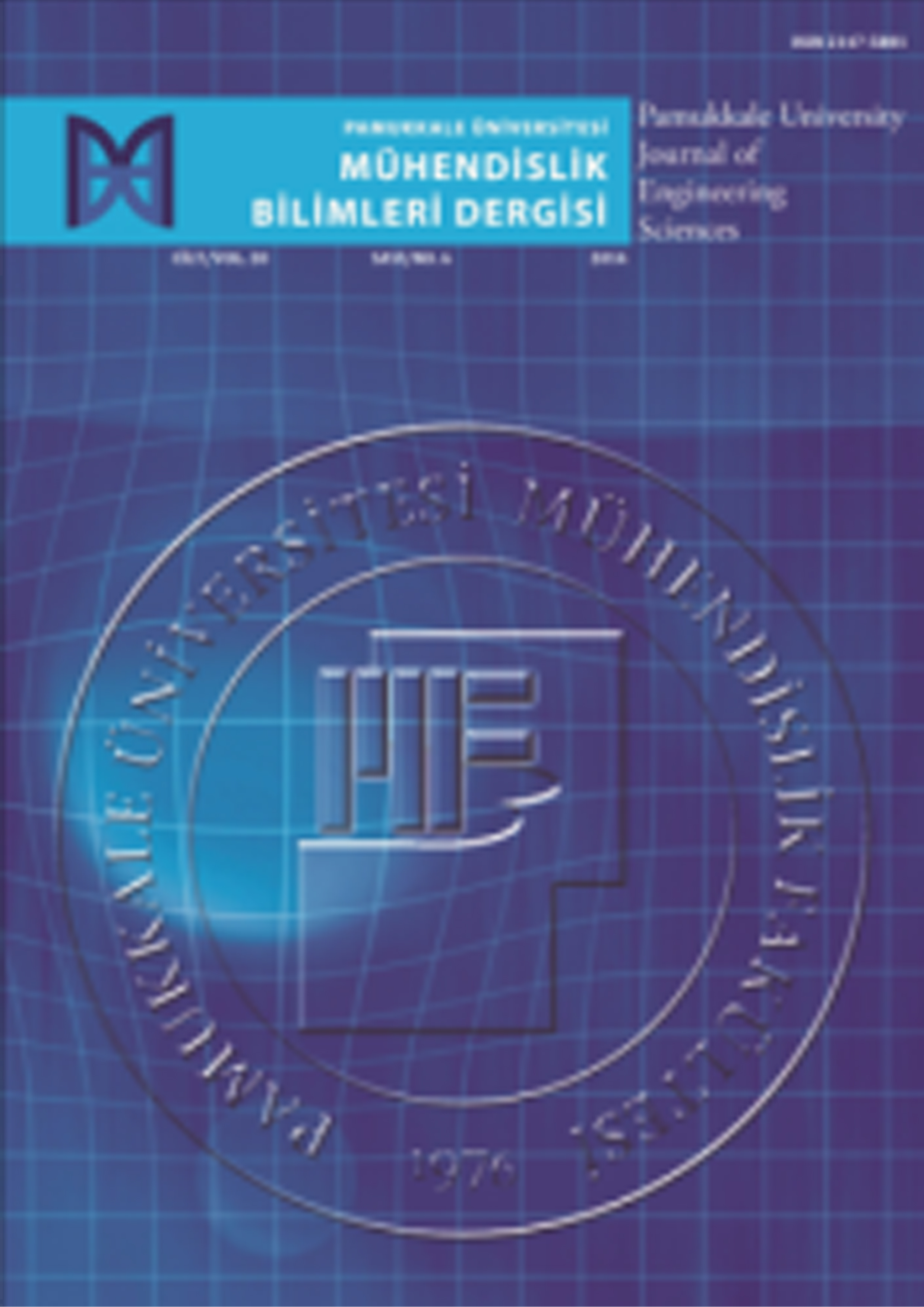Şekillendirme İşleminin DX51D Galvanizli Çelik Sacın Korozyon Davranışına Etkisi
Alaaddin Toktaş1, Mustafa Dülger2, Gülcan Toktaş11Balıkesir Üniversitesi, Mühendislik Fakültesi, Makine Mühendisliği Bölümü, Balıkesir2Anka Kümes A.Ş., Balıkesir, Türkiye
Bu çalışma şekillendirmenin (eğme ve katlamanın) galvanizli çelik sacın tavuk gübresindeki korozyon davranışını incelemektedir. Aynı zamanda çalışma, tavuk gübresindeki korozyon davranışını tuz sisi ve atmosfer ortamları ile karşılaştırmayı hedeflemektedir. Bunun için DX51D galvanizli çelik lazer yöntemiyle kesilerek numuneler elde edilmiştir. Daha sonra bu numunelere değişik formlarda eğme işlemleri uygulanmıştır. Bunlar V, L, U, ve Z-eğme ile çoklu eğme, katlama ve katlama artı eğme işlemleridir. Numuneler tuz sisi deneyine tabi tutularak yüzeylerinde oluşan beyaz ve kırmızı pas oranları belirlenmiştir. Lazer kesim, V-eğme, çoklu eğme ve katlama ile şekillendirilen numuneler atmosfer ve tavuk gübresi ortamlarında 28 gün bekletilmişlerdir. Bu ortamlardaki korozyon hızları numunelerin her yedi günde ortamdan alınarak kütle kaybı ölçümlerinden hesaplanmıştır. Tuz sisi deneyinde 60° eğme ile şekillendirilen numuneler %58 beyaz pas ve %4 kırmızı pas oranları ile diğer şekillendirmelere göre en yüksek korozyon direnci göstermişlerdir. Atmosfer ortamında çerçeve kesim numuneleri 0.00152 mm/yıl değeri ile en yüksek korozyon hızı göstermişlerdir. Eğme ve katlama işlemlerinin galvaniz kaplamaya, kaplamanın soyulması veya pul pul dökülmesi gibi zararlı bir etkisi olmamıştır. Ancak korozyon kaplama kalınlığını azaltarak eğilen ve katlanan bölgeleri olumsuz yönde etkilemiştir.
Anahtar Kelimeler: Galvanizli çelik, Eğme, Tuz sisi testi, Korozyon hızı.The Effect of Forming Process on the Corrosion Characteristics of DX51D Galvanized Steel Sheets
Alaaddin Toktaş1, Mustafa Dülger2, Gülcan Toktaş11Balıkesir University, Faculty of Engineering, Department of Mechanical Engineering, Balıkesir, Türkiye2Anka Poultry Equipments Systems, Balıkesir, Türkiye
This study examines the effect of forming (bending and folding) procedures on the corrosion behavior of galvanized sheet steel in poultry manure. It also aims to compare the corrosion behavior in poultry manure with salty and atmosphere environments. To achieve this objective, samples were prepared by laser cutting DX51D galvanized sheets. These samples were then subjected to various bending processes, including V, L, U, and Z-bendings, as well as multiple bending, folding, and folding+bending techniques. The samples underwent salt spray testing to determine the percentages of white and red rust on their surfaces. The samples, including laser cut, V-bendings, multiple bending, and folding, were exposed to the atmosphere and poultry manure settings for 28 days. The corrosion rates in these environments were calculated by measuring the mass losses every seven days. In the salt spray test, 60° bent samples exhibited the most corrosion resistance compared to the other forms, showing minimum percentages of white (56%) and red (4%) rust. The frame-cut sample showed a maximum corrosion rate of 0.00152 mm/year in the atmosphere. Bending and folding processes had no detrimental effect on the galvanized coating, such as peeling or flaking the coating. However, corrosion affected the bent and folded regions negatively by decreasing the coating thickness.
Keywords: Galvanized steel, Bending, Salt spray test, Corrosion rate.Makale Dili: İngilizce





